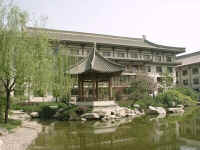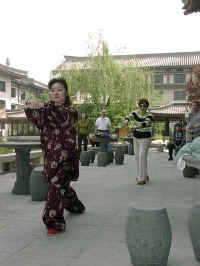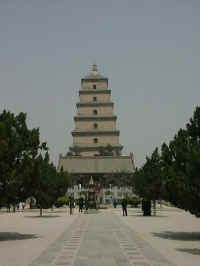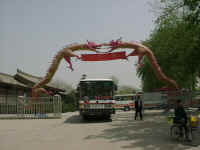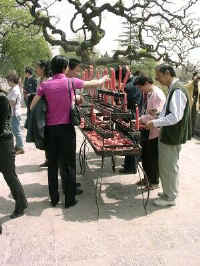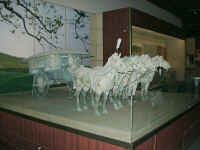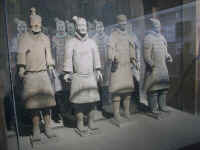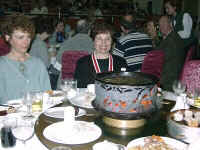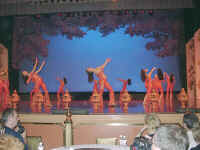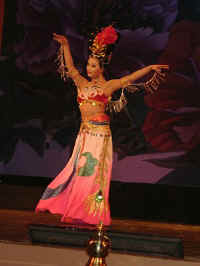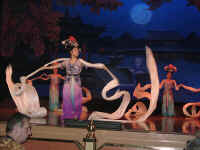|
XIAN
Wednesday, 12 April. We were up at six and snacked on food we'd been hoarding. The
train from Beijing pulled into Xian at 7:45, and a bus took us to the Xian Garden Hotel. On the way we
learned that Xian is the only city in China with its old walls intact (14th century). There are about
10 miles of walls forming a rectangle around the old city, but of course the city has grown far
beyond them. The hotel was not inside the wall, but it was a beautiful place. The large interior
courtyard was like a park. After an excellent breakfast buffet, we found our room and waited for
our suitcases to find us so we could shower and change clothes.
At 11:30 our group assembled in the courtyard for a tai chi lesson. It was another warm, sunny day. Then we toured the Big Wild Goose Pagoda (642 A.D.), a Buddhist shrine right next to the hotel. This was followed by lunch at a Muslim restaurant.
Next stop was the Shaanxi Provincial Museum, filled with interesting exhibits tracing Chinese history from its earliest known origins. Here we had our first look at some of the "Terra Cotta Army" that was the main attraction bringing us to Xian. The museum was arranged by dynasties, the prevalent means in China for historical chronology. We had found that our guides tended to describe objects and events by dynasties, rather than by centuries (or more specific dates) as is common in Western countries. In fact, when asked for dates about some event occurring in such-and-such dynasty, the guides sometimes seemed taken aback and had to take considerable time to figure it out.
After an hour break back at our hotel, we met again at 6:30 p.m. to go to a special
restaurant featuring a "dumpling banquet," a specialty of Xian. Commonly known as dimsum in
the West (or jioazi in China), these little treats come in almost infinite varieties. Most are
wrapped in pasta, but sometimes in pastry or a leaf. They were delicious, and the artistry that
went into their preparation was amazing. There were duck-shaped dimsum filled with duck,
tomato-shaped ones filled with tomato, compartmentalized ones with three separate fillings, etc. We went directly from the restaurant to the Shaanxi Opera. The performance consisted almost entirely of ballet, and it was excellently done. We thought it was far superior to the Beijing Opera. The bus got us back to the hotel about 10:00 p.m.
Copyright © 2000-2023 DarrellPeck.com All rights
reserved. | ||||||||||||

